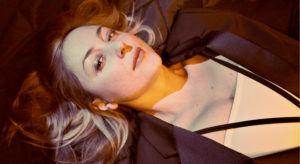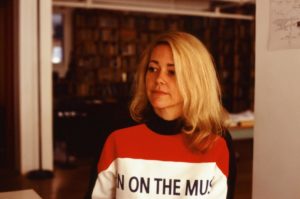
Q&A: Composer Paola Prestini on the World Premiere of her ‘Edward Tulane’
By Jennifer PyronPaola Prestini’s first grand opera, “Edward Tulane,” makes its world premiere on October 8th as the first work by a woman to be commissioned by Minnesota Opera as part of the company’s New Works Initiative. Based on the novel, “The Miraculous Journey of Edward Tulane,” by Minnesota author and two-time Newbery Medalist Kate DiCamillo, Paola Prestini collaborates with librettist Mark Campbell to honor the core purpose of this story and remind us all of opera’s ability to illuminate the power of the human voice.
OperaWire visited more with Prestini about this highly anticipated journey’s creative process and how it all began back in 2016, prior to the pandemic. Diving in and out of different life lessons along the way, “Edward Tulane” creates a bridge to bring us together and remember the ultimate lesson of life.
OperaWire: What was your initial creative process like for this work? How did it all begin?
Paola Prestini: The Artistic Director of Minnesota Opera, Dale Johnson, reached out to me and the librettist, Mark Campbell, in 2016 saying he wanted to do an opera together. I was very excited about this invitation, especially because this is my first grand opera. After bouncing around initial ideas, he suggested the book “Edward Tulane” by Kate DiCamilo. My son was seven at the time and we began reading this together. I immediately fell in love with Kate DiCamilo’s story. She is a brilliant author. My imagination started to grow and dream while reading her book. Mark Campbell’s libretto has also been a perfect diving point for this project because he creates these moments of abstraction that allow me to paint the worlds of these places and people that Edward meets.
OW: I recently watched “Edward Tulane Choral Suite” featuring an excerpt of your score with animations by Erin Pollock and immediately fell in love with your abstract sounds that create this web for the imagination. How do you feel your music connects listeners to this storyline through your lens?
PP: My music is about connection. Even when there are moments of abstraction and these underwater worlds for listeners to dive into, at the end of the day I really believe in the power of the human voice. The complexity that I create in this opera through sound is designed to surround the voice while the voice continues to be the main focus. The human voice creates the pathos, the empathy, the joy and the sorrow. I feel audiences will connect in this way, through the human voice, while also feeling the playfulness of my music.
Oftentimes, opera can be about human suffering, especially female suffering. For this opera, I wanted to take a universal approach to better understand someone losing their home and then finding their home. Ultimately, this is about the journey of finding one’s self and a new sense of home throughout life. The core message of this opera and the sounds of the worlds that Edward discovers along his journey are the playfulness that enriches the imagination to wonder more about what underwater worlds can sound like, or a crazy diner scene, or even a zany doll shop. I had a lot of fun while creating this work and I hope audiences connect with me in this way.
OW: I also love all the personalities the dolls have in the doll shop. Erin Pollock’s claymation work is incredible. Can you tell us more about your collaboration for the “Edward Tulane Choral Suite” video?
PP: Yes, the dolls are so much fun! They are so zany, I love it. I loved working with Erin Pollock for this piece and for another piece we did together, “A Jarful of Bees.” She immerses herself completely within her work and the claymation she creates is so uniquely her own world. She is amazing. The scene for “Edward Tulane Choral Suite” takes place at the very end of the opera where Edward has already been broken into pieces and goes into a doll shop where this incredible doll repairer named Lucius Clarke fixes him. When Edward arrives, the dolls feel a tremendous sense of competition because he is not a doll, he is a rabbit. The dolls become these subpersonalities that challenge Edward about who he is and teach us about how to better understand the ultimate lesson of life.
OW: While listening to “Edward Tulane Choral Suite,” I felt like there were abstract pockets that you expanded and gave listeners a chance to better know you through sound. This opera feels very intimate to me in this way, and I want to know more about what Universal message you are sharing with us. What are some of the qualities behind your work that makes it feel like “home”?
PP: I wanted to introduce the audience to some unexpected sounds in opera. This is my first grand opera and while I’ve had quite a bit of experience writing for the human voice, I had yet to write an opera. Therefore, I pulled from all my past experiences, like writing for children’s voices and choral works, that came from highly interdisciplinary settings, to develop this work. This was challenging in a fun way for me. I learned how to use my previous experience to enliven and uplift the themes of this opera. I also think being a parent and seeing my son grow with this book helped me. I thought about how children and young adults might approach opera and see themselves on stage. All of these nuances filter in through my music, and also pull from my experimental electronic background.
Even though I’m not really focusing on experimental electronics for this entire work, I am filtering from my past experiences and translating what I’ve learned thus far into this opera. The transpositions become really fun challenges and make it a composite experience that also pulls from my personal experiences in life. The losses and struggles become these characters for me that then connect all of us in a universal way. What we share as human beings in different ways is what this opera is all about. Many times I felt like I was painting with sound and then refining these moments in relation to the human experience.
OW: What was your process like when composing and really getting into the complex parts of so many instruments and sounds, especially foley. How did you piece all of this together?
PP: Minnesota Opera is known for having a very extensive workshop development process. Everything from piano, vocal and orchestral workshops. But, it was also at this time when the pandemic happened, which made me rethink my work and gave me time to go deeper into these worlds. Minnesota Opera’s Choral Master, Andrew Whitfield, also came to me during this time and we started creating a choral suite to get some of the music out to the public. This is when I realized the only live musicians I had were the singers and so really creating a world of sound using foley and electronics became the way forward for me.
I collaborated with a good friend of mine, Sxip Shirey, who is incredible, and we essentially created this world together. After this process, I had this new level of fun sound in my head that I wanted to bring back into the orchestra. This was the final layer of sound painting that brought everything together. In a way, the pathos of the pandemic gave me time and space that I would not have had otherwise. This work began in 2016 and translated this new perspective of space and time into a much deeper process than I had initially planned.
OW: I imagine the stage design and visuals for this opera will be very special. What can you tell us about this?
PP: Costume Designer, Vita Tzykun, is incredibly brilliant and has created over a hundred costumes that include everything from jellyfish to dolls. Her extensive research for these costumes and the different centuries they come from have made this into a visual masterpiece. Stage Designer, Walt Spangler, has also created these moments where we find Edward in and out of imaginative spaces that are visually fascinating and unique. Overall, the visual world of this opera is woven together by Stage Director, Eric Simonson, who has this direct approach and seamlessly crafts the flow of Mark Campbell’s libretto into this visual storytelling. Conductor, Lidiya Yankovskaya, is also a major part of this incredible team that is creating something very new and special for everyone of all ages to enjoy. This work has been an ultimate collaboration for everyone involved.
This is an intergenerational work and my hope is that when people are thinking of this opera, they think it is an opera for them. I also hope they take away an incredible personal experience. This is the power of a good story. When you experience something in a state of flow that takes you further on a personal journey and leaves you with afterthoughts to continue this sense of expanding.



